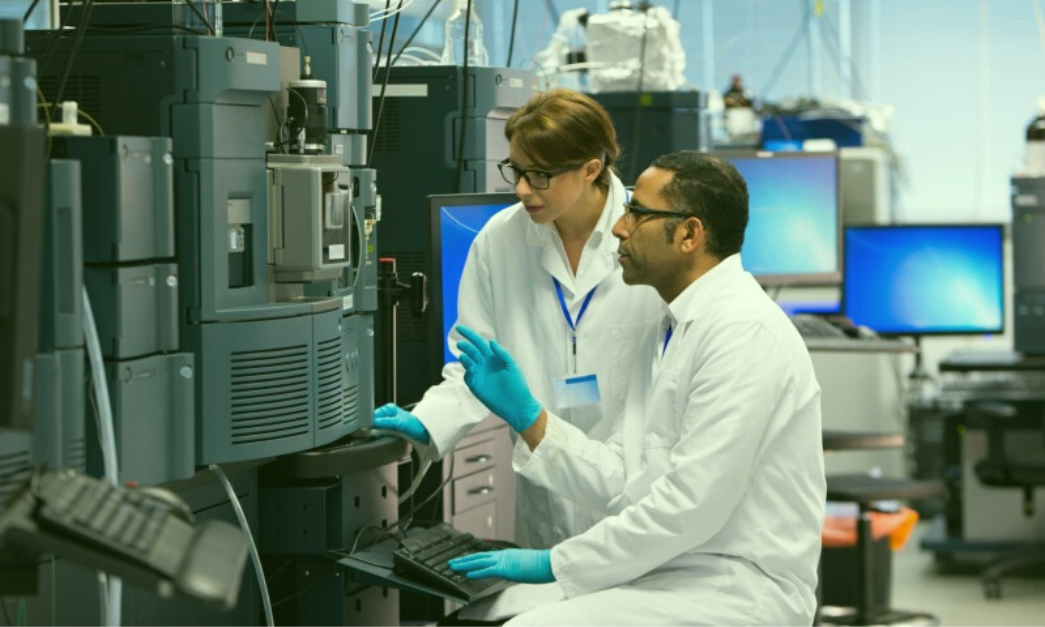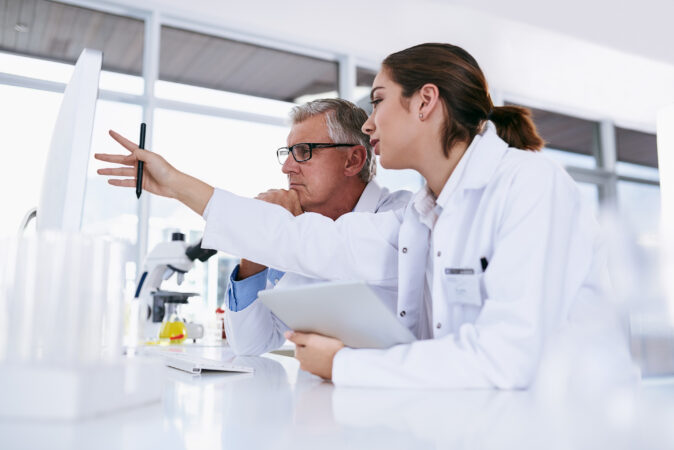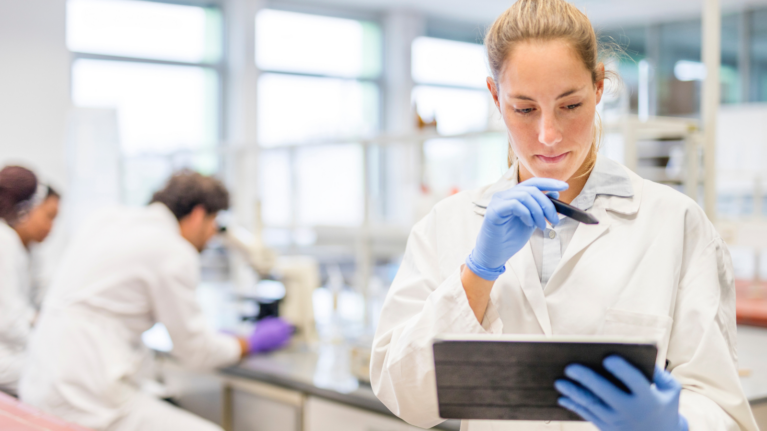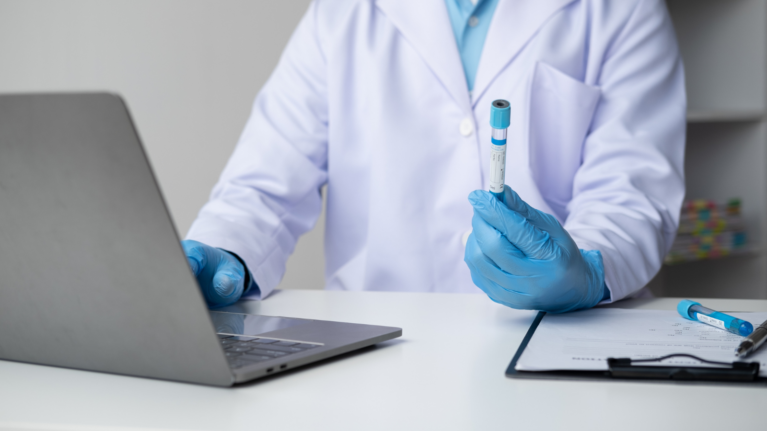

Perhaps it was the time the lab manager had to scramble to gather all the documentation for the following week’s compliance audit. Or maybe it was when the lab wasted nearly a thousand dollars on a reagent it already had stashed in the back of the chemical cabinet.
Whatever the inciting incident, more and more labs are seeing the value of moving their operations from paper-based or single-purpose digital solutions to integrated laboratory management platforms. Melina Blees, site director for biotech incubator BioLabs Philadelphia, says recognition of the need to organize can dawn suddenly for a rapidly growing company.
“Within a week, they can go from all this information living on a spreadsheet and in the lab manager’s head to suddenly being too much,” says Blees. When it comes to mission-critical tasks like tracking inventory, providing electronic laboratory notebook (ELN) capabilities for capturing protocols and experimental data, and monitoring instrument performance, digital platforms can take away a lot of the pain.
The transition must be thoughtfully managed, however. Many labs have resorted to homemade software that may not stand the test of time. Erwin Seinen, founder and managing director of laboratory software company eLabNext, notes these are often the creation of a single lab member. “If this person leaves the company, there’s no one to keep the software running,” he says. “It’s important to choose a platform that’s future-proof.”
Short-term thinking might see labs stumble on the first steps of their digital journey, but done right; the digitalization process can transform the efficiency, quality and sustainability of operations.
Digital Lab Platforms that house ELN and LIMS features are a popular jumping-off point for many laboratories and can ensure data are collected consistently and securely. These tools can harvest and format experimental data without the need for relaying files between computers on USB drives.
Seinen also sees an edge for staff outside the lab, whether they be researchers isolating at home or out in the field. He notes that environmental researchers at Canada’s Hakai Institute and the US National Oceanic and Atmospheric Administration are using the eLabNext platform to automate key aspects of their sample collection and logging processes in the field. Reliable data collection and transmission can make the difference between breakthrough and disaster for a once-in-a-lifetime project. “What if you’ve spent millions of dollars to go on this expedition for a month to do these things,” he says, “and now you’ve missed that data because you didn’t record it correctly?”
Digital data are easier to find and reuse, which is critical for ensuring an experiment’s reproducibility or for providing a more accurate alternative to the ‘paper trail’ that regulatory agencies use to audit research facilities for compliance. This traceability empowers labs to make more of their data through downstream bioinformatic analysis with other software that might be coupled with the ELN system.
The digital transition is also suitable for a lab’s bottom line. Beyond the resources lost to needlessly repeated experiments, many research groups routinely waste money on the purchase of excess or redundant reagents and materials. Digital inventory tracking trims away much of this waste by giving staff a continuously updated view of current stocks. “We see a lot of savings for labs by preventing double-ordering,” says Zareh Zurabyan, head of eLabNext Americas. “Working with labs from academia to biotech and pharma, we get feedback that they save thousands of dollars yearly by going digital.”
Squandered effort and resources can leave a deep environmental footprint, and digitalization can be an asset here as well, although many labs may not be fully aware of this. “My experience so far is that’s a new connection that people are making,” says Rachael Relph, chief sustainability officer for the nonprofit, My Green Lab, which promotes best practices in lab sustainability and runs a global green lab certification scheme.
Every dollar saved by minimizing consumption through digital inventory management means less waste being burned or deposited in a landfill. The magnitude of the research waste problem is not fully understood, but Relph points to estimates suggesting the world’s labs annually produce more than 5.5 million tonnes of plastic waste alone (Urbina, M. et al Nature 528, 479; 2015).
Routine laboratory operations are also highly resource-intensive, even for research groups that may be effectively managing their reagent inventory. “Laboratories consume between five and ten times more energy than commercial office spaces per square foot, and about four times more water,” says Relph. With insights gleaned from digital data, labs have opportunities to take a bite out of this consumption without undermining their research. For example, My Green Lab highlights careful freezer maintenance and temperature adjustment to reduce day-to-day power use.
To maximize these benefits, labs need a clear vision of how to digitalize their work in a way that maximizes their long-term ‘digital health’, Zurabyan says. This means avoiding bespoke or limited-scale solutions that might become obsolete or create additional work rather than saving scientists effort. “Don’t just dive in right away. Have a game plan in place, and then start implementing solutions one by one,” he says. “Working with BioLabs and My Green Lab allows us to understand the true needs of these labs, and give them digital transformation consultation in the process.”
Relph adds that while digital platforms such as laboratory information management systems (LIMS) can help lab managers spot opportunities to make their operations more sustainable, there is no one-size-fits-all solution. “Helping labs see how digital tools could solve their particular challenges is key to them finding the one that works for them,” she says.
eLabNext is now looking to partner with both My Green Lab and BioLabs to help facilitate this process for new startups. The idea is that providing young companies with far-reaching digital solutions will start them off on the right foot in terms of operational efficiency and incorporating the sustainability measures identified by My Green Lab. “By building those habits into a company when it’s small,” says Blees, “it’ll have a much larger impact when you have hundreds of people.”
Relph is likewise enthusiastic about fostering a new generation of scientists to take the lead on sustainability in the lab, empowered by digital technologies. “We can inspire an entire community,” she says. “There’s going to be quite a transformation in the next ten years.”
“If yesterday the task for labs was how to digitize and become more efficient,” says Zurabyan, “tomorrow the task is how to digitize sustainably, setting a foundation for large-scale data analysis using automation and AI.”

 By Ethan Sagin
By Ethan Sagin
Learn how eLabNext utilizes impact-driven metrics and assessments to optimize digital operations, enhance customer satisfaction, and achieve lab digitization goals effectively.
Read more
 By Zareh Zurabyan
By Zareh Zurabyan
Discover the transformative power of a Sample and Digital Strategy, and follow our 5 easy steps to prep for a seamless ELN/LIMS transition.
Read more
 By Chris Austin
By Chris Austin
Discover the ongoing debate between paper and ELNs in research institutions, weighing the simplicity and tangibility of paper against the efficiency and collaboration-enhancing features of ELNs.
Read more
Schedule a Personal Demo for friendly expert guidance and a free lab workflow assessment.